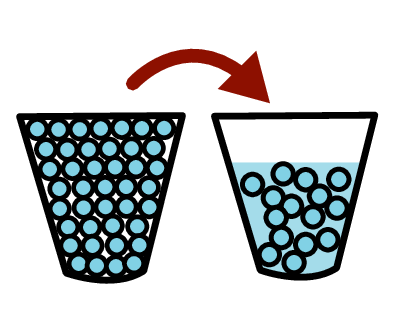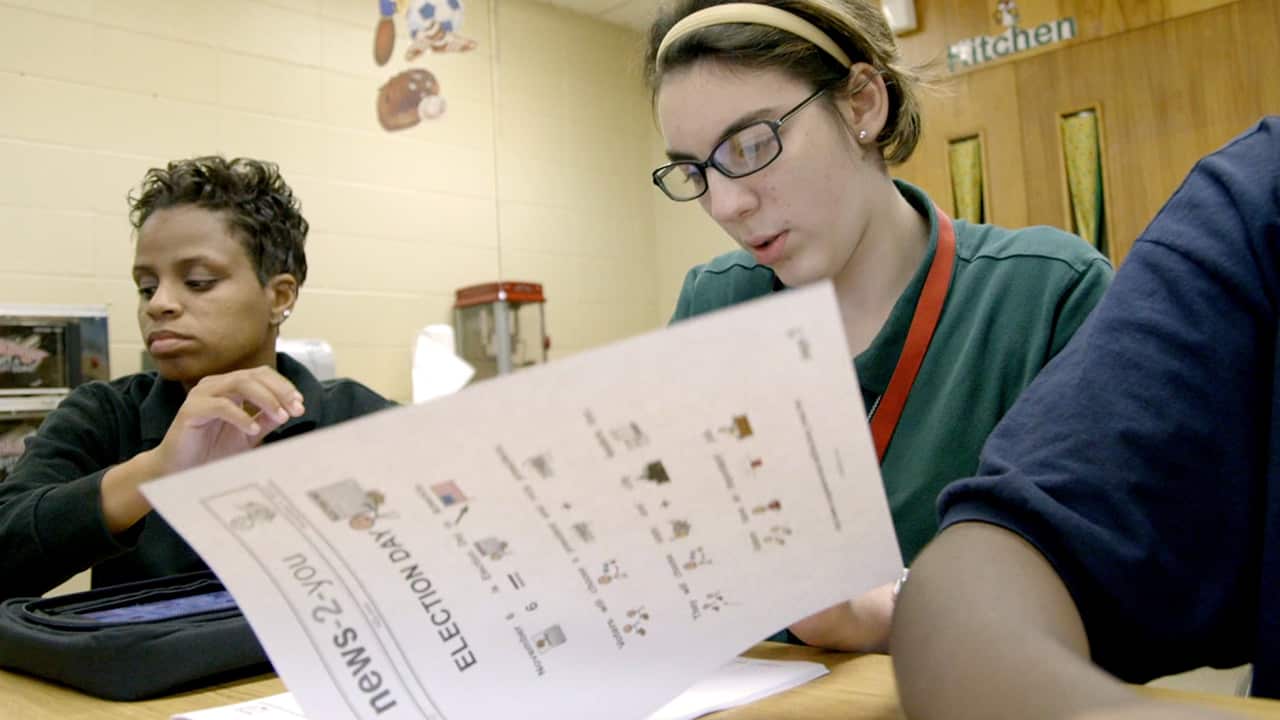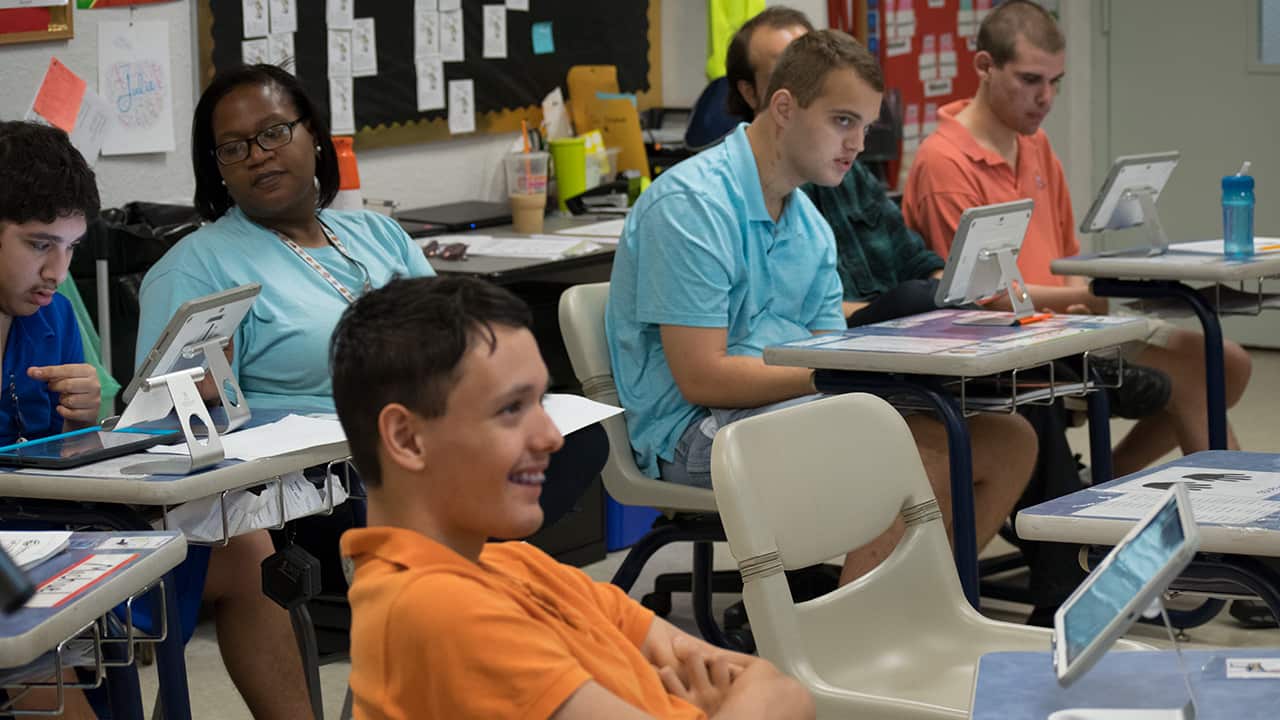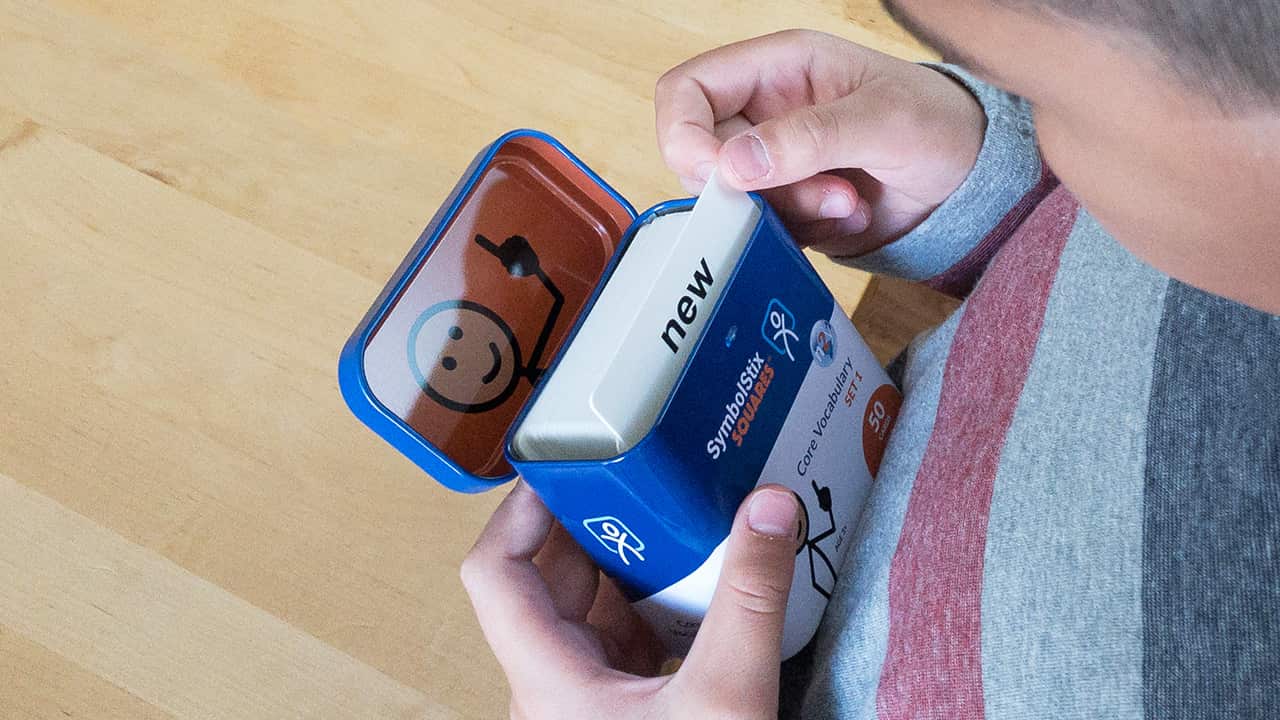How do you determine when to use a social story?
I think that is a great question! When we’re looking at social stories, we want to look at whether there’s any time that there is or was a breakdown in expectations or if we’re anticipating that something is going to be different. A great time to use the social story is when you have skills to pre-teach. You pre-teach vocabulary, but you also have to pre-teach life skills. So, with pre-teaching we’re telling students, “This is the setting and these are the expectations and this is how you might feel, and this is how others might feel and this is a social rule.” I always look at social stories as explaining what a social rule is—and making that more concrete, as in what to expect and also what they can expect to experience. It could be flying on an airplane or going to the movies. If you’re going to the movies, you might explain that you have to pay for the ticket, what you’ll do with the ticket, when you can get concessions and the importance of being quiet in the theater. A social story is really looking at different settings and expectations and trying to get in front of it to pre-teach the skill, but it can also be used as a reflection tool as well.
What does IB stand for?
IB stands for International Baccalaureate Program. My school, which is in Shaker Heights, offers the IB program from kindergarten all the way through graduation. We’re teaching students about being civic minded and thinking in a worldly manner. Looking not only at what we’re learning and experiencing in our building, but also in our community, in our state, in our nation as well as internationally, and how our actions affect all of those entities. There’s a lot of emphasis on being globally minded students. And so one of the ways that we’ve tried to incorporate the IB philosophy in my classroom is by teaching the different attributes of the program:
- Being open-minded, caring, a communicator, balanced, reflective, an inquirer, a thinker, knowledgeable, courageous and principled
- Example: for “communicator” we discuss (as a school) different ways to communicate through writing, talking, drawing, sign language, AACs, etc
- There are a LOT of best practices that align with an IB program
There are different planners for each grade, which exposes different points of interest—from how we organize ourselves, to sharing the planet, to how the world works. Instruction and inquiry for being a “communicator” might look one way as a kindergartener and very different as a fourth grader, as this skill is built upon over the years. So we’re always coming back to those guiding principles, but we’re increasing the complexity of what that looks like as the students grow and progress over the years.
Where can I find sign language symbols or photos online?
I know that SymbolStix PRIME has over 1,000 symbols in its library. There are also different apps if you look in the app store as well as a lot of free options on the different search engines if you type in the keywords American Sign Language + word.
Do you use SymbolStix for all of your students?
I don’t necessarily use SymbolStix specifically for all of my students. What I really try to do is create an environment where there’s access and the presence of them as visual supports in our classroom environment and wherever symbol support is appropriate. I start by looking at what each student responds to but you’ll never know what they will respond to until you try. I set up my classroom in a way that I’m clearly communicating the expectations to help make their learning accessible with visual supports and clearly defined spaces. SymbolStix PRIME is a really great communication tool in that it takes the visual and makes it more accessible or understandable. I have some students who respond better to an actual picture and some students who respond best to pictures of their own personal items. For example, they might not respond to a SymbolStix of lunch box but they might respond to a generic picture of a lunch box that I found on a search engine. Then, as I increase the complexity and planning for generalization, I’m going to try to take what they know and pair it with something that might be less familiar so they can start to build that bridge and connection and really increase the rigor in understanding. SymbolStix PRIME is a great solution for helping me meet each student where they are and then building the communication.
Should I use only one type of visual?
I recommend not using only one type of visual because that visual might not be in all different locations or all locations/items might not look exactly like that visual. And so what you really want to do is to be able to teach generalization and teach executive functioning… helping students look at the world and the environment around them in a way that’s familiar, but also relatable. When you talk about being relatable, you need to have many different exposures. If you think about the way that we learn words or we learn different vocabulary, we need multiple exposures. If you’re learning what a dog is you need to see the word “dog,” you need to touch, you need to see pictures, and you might want to experience a dog to deepen the understanding and the learning. And so, if you’re only using one visual then you’re not setting your students up for success. It’s important to find ways to build on that first image and expand their learning and their understanding.
How do you carry multiple visuals with you while you’re not in the classroom?
There are different ways that you can do that. One option I like to use is putting the visuals on a metal circle ring. You can also have your visuals on a board—I’ve had them on clipboards, so I’m just carrying the clipboard. If the student has a communication device, make sure that the device has different visuals to promote as much independence as possible. And, whenever possible, if a student can carry their own symbols, that’s a great opportunity. It might be a book that they carry with their different symbols or maybe a book bag. If you’re in a situation where a student needs to have a lot of different visuals, then you want to really try to plan for success and see what would work for that student or that classroom or that setting. What I’ve done with students who go to their homeroom or their Gen Ed setting is making sure that I have consistent visual supports in my classroom as well as in their other classroom or settings.
One quick adaptation, something I do in my students’ homeroom, is keep a dry erase board and a marker handy—and I’m not the best artist, but I can make it look understandable enough in a pinch. I’ve also been known to pull out my phone and search an image on there to be able to explain something or make a connection. It’s about looking at our environment and asking, “what are the tools that I have near me that I can use right now?” And then also reflecting on those experiences and thinking about, “how can I set myself and my students up for success?” I’ve learned that this kind of responsiveness is something that they really need. How can we try to set up their environment so that they have access to the supports and teaching they need so they can start to be more independent.
How effective are the pictures if you don’t have a color printer?
For some students — you would be surprised — things that we think might be an issue or might be more difficult, they just don’t always focus on. It really just depends on each individual student. If you don’t have access to a color printer and this is something that your kids enjoy, you might have them create their own visuals with their own markers or, if you’re using SymbolStix, have them color them in themselves. Having them personalize it is one way of making a visual a lot more meaningful to them and gives you insight as to how they experience the world around them.
How do you help students who are both deaf and blind to communicate?
Communication is something that everyone seeks. In a sense we were born to talk, although “talking” takes many forms. Oftentimes, when one sense (or multiple) is decreased/eliminated another sense is strengthened. Finding strengths, and then building on them, is what we are in the business of doing. This may look different for each individual and will most likely take a team to problem solve and support. My first instinct is to provide as many tactiles and physical manipulatives as possible. Observe what the student responds best to and then try to incorporate that into as many response or choice opportunities as possible. The teacher of the visually impaired (TVI), teacher of the deaf and hard of hearing, interpreter, speech-language pathologist and parents are all great places to begin the brainstorming process.
Fields are constantly improving and trying to bridge the gap of needs/services so I would recommend also spending some time looking into the American Association of the Deaf Blind. They have many different examples of this (including tactile ASL and many more).
How have you adapted materials for students who have both vision and communication needs?
I have two students currently in my classroom with vision and communication needs. Both students have service providers in speech and hearing as well as consults with a teacher of the visually impaired. We work together and discuss what is going well, what the student is not able to access meaningfully, and how to modify the environment so that they can. I have inserted below some of the strategies utilized in my classroom but always recommend consulting with a TVI and SLP to meet each student’s individual needs:
- Increase the font (most copiers have an “enlarge” setting to do so)
- Keep the light source at their back (not in their eyes) and don’t present in front of a light source
- Provide physical/tactile manipulatives or examples
- Use slant boards
- Provide additional task lighting sources (think mini-clip on night light) to project onto the paper/materials
- Have information in both visual and auditory formats when possible
- Present information on the side of the stronger eye (if there is one)
- Reduce the amount of information on a page
- Direct vision using line guides, templates or pointing with a finger
- Provide extended time to process information
- Set up preferential seating within 10 feet of instruction and slightly to the side of the stronger eye (if there is one) to optimize visibility
- Provide verbal prompts to scan an environment before traveling in novel spaces
- Ensure access to a word processor
- Monitor use of glasses—they should be clean and worn regularly, high on bridge of nose to properly view distance objects
- Use high-contrast materials (dark print/markers on white or yellow paper/background)
- Present information at eye level and slightly on the strong side
- Use simple fonts (Arial) and/or expanded character spacing with teacher-generated worksheets and/or electronic tasks
- Present information repeatedly to assist with visual memory
- Provide individual copies of printed materials presented in the distance
- Have students point to and/or read the letters in sight words/words in sentences to encourage left-to-right scanning
- Use bold outlines in pictures intended for coloring and cutting (1/8″-1/4″ with black marker)
- Provide dark lead pencil, erasable pen, or fine-tipped marker for added contrast when writing, and use bold line/highlighted paper
- Vary tasks to allow for visual breaks and optimize attention
- Give permission to move to improve visual and/or auditory position
With symbols, at what point can you tell them “no”? My student had mastered asking for the iPad. Is it ok to tell him “no” since we’re past the beginning stages?
I would recommend building on this in more ways than one. Increasing the complexity in which they are asking (longer/fuller sentences) can extend that further to discussing what they want to do on the iPad, or why it’s important to them, so that they are practicing communication lengths on a topic they are motivated about AND you are building access to the iPad into their day so that they have access to reinforcement. Example: first math then iPad. You can implement a token board at this point and build it into a visual schedule so that they can see WHEN they will gain access to this reinforcement.
I believe in voice and choice as well as being balanced in the classroom: we take time to WORK and PLAY. In my classroom I have implemented structured break times so that my students get “technology break” twice a day (once before recess and once before dismissal). In my view, this addresses a few things:
- Students are transitioning from a preferred activity (iPad) to a preferred activity (recess).
- They know they have to complete their work prior to having this break.
- It is built into their schedule and consistent, which alleviates the anxiety in anticipation.
- This also alleviates the argument of “no” because you are essentially saying, “Yes you can have it at this time. See? It is on your schedule after work.”
- During other break times we have free play, play-doh breaks, drawing breaks, and quiet reading breaks so that different options and activities are exposed daily.
What’s the most functional way to use a communication book? I have students who aren’t ready for an iPad, but their lexicon is fairly large.
Any strategy that allows for meaningful communication—meaningful and motivating to them, that is. Communication books can first be used to make requests. Pair this with a tangible (request a drink get a drink, request swing go to the swing) and then build upon the complexity of the responses. “Yes/no” is life changing in my opinion because it can be used in so many settings/environments.
Example of how to teach this: hold up a non-preferred (paperclip) and a preferred item (chip).
- “Do you want the chip?” Pair “yes” as the response, then give the chip.
- Do the same for paperclip: pair “yes” as receiving the item and “no” as not receiving the item.
- If they receive the paperclip and push it away, prompt “You are saying ”˜no’ to paperclip. Here is ”˜no’,” then present the “no” card.
This example may of course need to be modified depending on the preferences of each student but I do hope it is helpful in thinking about how to apply the skill.
I would also recommend starting with meeting basic needs too—bathroom, drink, eat, help, more, stop, break, headphones, etc. Teach one skill at a time and continue to build and maintain.
When speaking of a level 1 student, are we to assume it is a child who may not be able to physically access materials?
I believe the level 1 that you are referring to is of the voice levels image I shared. I’m sorry I did not get to spend more time on this—so many great things to discuss and not enough time! This is a schoolwide visual that is used for expected voice level in specific settings regardless of how a student communicates.
Examples:
- Level 1 is silent. Everyone should be at a level 1 when a teacher is giving directions or for the first 10 minutes in the lunchroom.
- Level 2 is whisper.
- Level 3 is conversation.
- Level 4 is outdoor level.
- Level 5 is loud (emergency, yelling for help).
We have visuals for these levels posted in different areas of the building demonstrating what voice level is appropriate for that setting. In the library you may see level 2 and in the gym you may see level 3, for example.
I’d love to see what the CHANGE symbol looks like.
There are several different options in SymbolStix PRIME when searching the ”˜change’ symbol. Here are three of them.
 |
 |
 |
I would like to know more about the L3 Skills and Positivity programs.
L3 Skills provides a fun, real-world way for students to practice lifelong academic and transition skills. L3 Skills also reinforces core math and literacy skills and offers teachers added flexibility in grouping and classroom management.
Positivity enhances classroom management and empowers independence with positive, proactive strategies to help students self-regulate, reduce off-task behavior, strengthen social engagement and much more. Research confirms that in order for learning to occur, self-regulation skills and emotional control are vital.
What are the prices for Unique Learning System and a News-2-You subscription per class?
The costs of Unique Learning System, News-2-You and other n2y solutions can be found here.
Can I watch the recording of the webinar you did on Visual Communication for Nonverbal Students?
Absolutely! You can watch the recorded webinar here.



